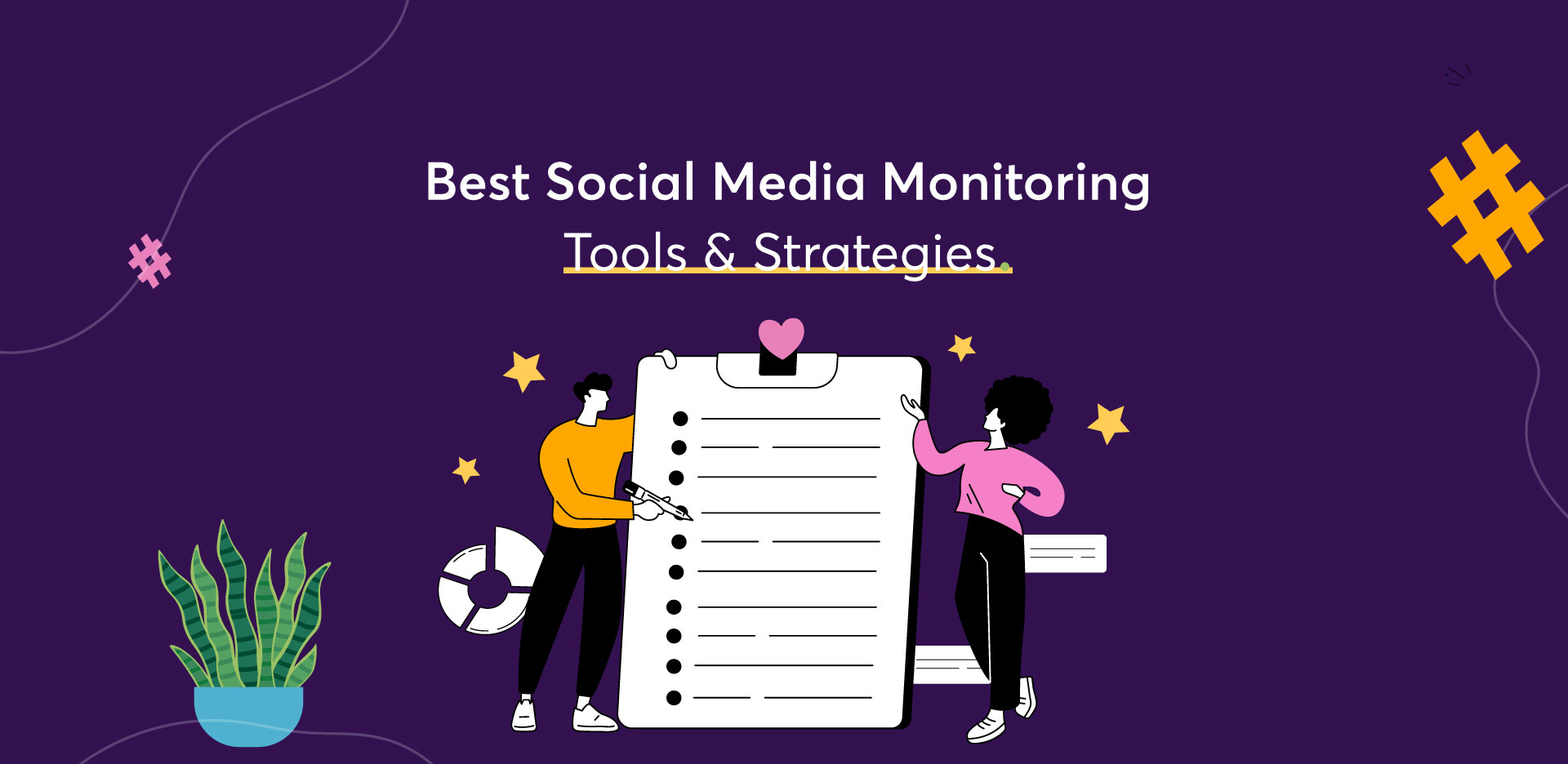In today’s digital age, social media isn’t just a platform for sharing cat videos and selfies—it’s a powerful tool for businesses to understand their audience, manage their brand, and stay ahead of the competition. But how do companies keep track of the endless stream of content that flows through these channels? The answer lies in social media monitoring. This process allows businesses to track, analyze, and respond to various conversations happening online. But what is the social media monitoring process?? Let’s dive in.
What Is The Social Media Monitoring Process?

The Importance of Social Media Monitoring
Imagine trying to navigate a ship without any navigation tools—sounds risky, right? That’s what it’s like for businesses operating without social media monitoring. In a world where a single tweet can go viral in minutes, monitoring your brand’s online presence is crucial. It helps you stay connected with your audience, respond to customer inquiries, and manage your brand’s reputation. Moreover, it provides valuable insights into market trends, competitor strategies, and customer preferences, enabling businesses to make informed decisions.
Key Concepts in Social Media Monitoring
Understanding Social Listening
Before we delve into the nitty-gritty of social media monitoring, it’s essential to understand a closely related concept: social listening. While social media monitoring focuses on tracking and responding to specific mentions and conversations, social listening goes a step further. It involves analyzing the broader trends and sentiments across social media platforms to gain deeper insights into customer behavior and preferences.
Difference Between Social Media Monitoring and Social Media Analytics
Social media monitoring and social media analytics are often used interchangeably, but they serve different purposes. Monitoring is about tracking real-time mentions and interactions, while analytics focuses on analyzing this data to extract meaningful insights. Think of monitoring as gathering puzzle pieces and analytics as putting the puzzle together to see the bigger picture.
The Steps Involved in Social Media Monitoring
Defining Your Objectives
The first step in the social media monitoring process is defining your objectives. What do you want to achieve? Are you looking to improve customer service, manage your brand’s reputation, or track your competitors? By setting clear goals, you can tailor your monitoring efforts to meet your specific needs.
Identifying What You Want to Monitor
Once you’ve defined your objectives, it’s time to identify what you want to monitor. This could include brand mentions, product reviews, industry trends, or competitor activities. The key is to focus on the areas that align with your business goals.
Setting Clear Goals
Setting clear, measurable goals is crucial for effective social media monitoring. Whether it’s increasing brand awareness, improving customer satisfaction, or boosting sales, having defined targets will guide your monitoring efforts and help you measure success.
Selecting the Right Tools
Choosing the right tools for social media monitoring is like selecting the right gear for a hike—essential for a successful journey. There are numerous tools available, each offering different features and capabilities. The key is to choose a tool that aligns with your objectives and budget.
Popular Social Media Monitoring Tools
Some of the most popular social media monitoring tools include AIM Insights, Sprout Social, and Brandwatch. These platforms offer a range of features, from tracking brand mentions to analyzing sentiment, making them valuable assets for any business.
Factors to Consider When Choosing a Tool
When selecting a tool, consider factors such as ease of use, integration capabilities, and the depth of analytics offered. It’s also important to choose a tool that can scale with your business as your social media presence grows.
Gathering Data
Once you’ve set your objectives and chosen your tools, it’s time to gather data. This involves tracking mentions, hashtags, keywords, and other relevant metrics across various social media platforms.
Real-Time Monitoring vs. Historical Data
Real-time monitoring allows you to stay on top of current conversations and respond promptly, while historical data helps you identify long-term trends and patterns. Both are important for a comprehensive understanding of your social media landscape.
Using Keywords and Hashtags for Data Collection
Keywords and hashtags are the building blocks of social media monitoring. By tracking these, you can identify relevant conversations, gauge sentiment, and uncover emerging trends.
Analyzing the Data
Data collection is only half the battle—now comes the analysis. This step involves identifying trends, understanding customer sentiment, and analyzing competitor activities to gain actionable insights.
Identifying Trends and Patterns
By analyzing the data, you can identify trends and patterns that can inform your marketing strategies. For instance, if you notice a growing demand for a particular product feature, you can leverage this insight to enhance your offerings.
Sentiment Analysis
Sentiment analysis is a powerful tool in social media monitoring. It helps you understand how your audience feels about your brand, products, or services, enabling you to address any negative perceptions and reinforce positive ones.
Competitor Analysis
Monitoring your competitors is just as important as tracking your own brand. By analyzing their social media activities, you can identify their strengths and weaknesses, uncovering opportunities to differentiate your brand.
Acting on Insights
The final step in the social media monitoring process is acting on the insights gained. Whether it’s managing a crisis, engaging with customers, or refining your marketing strategies, the key is to be proactive and responsive.
Crisis Management
In the age of social media, crises can escalate quickly. By monitoring your brand in real-time, you can identify potential issues early and take swift action to mitigate them.
Customer Engagement
Engaging with your customers is essential for building strong relationships and fostering brand loyalty. By responding to comments, answering questions, and acknowledging feedback, you can create a positive brand image.
Refining Marketing Strategies
Social media monitoring provides valuable insights that can help you refine your marketing strategies. Whether it’s tweaking your messaging, targeting new audiences, or launching new campaigns, the data you gather can guide your decision-making.
Benefits
Enhancing Customer Service
One of the most significant benefits of social media monitoring is the ability to enhance customer service. By tracking mentions and responding promptly, you can address customer concerns, answer questions, and build stronger relationships with your audience.
Protecting Brand Reputation
Your brand’s reputation is one of its most valuable assets. Social media monitoring allows you to keep an eye on what’s being said about your brand and respond to any negative comments or reviews before they escalate.
Improving Marketing Campaigns
The insights gained from social media monitoring can help you improve your marketing campaigns. By understanding what resonates with your audience, you can create more targeted and effective campaigns that drive better results.
Challenges
Dealing with Data Overload
One of the biggest challenges in social media monitoring is dealing with the sheer volume of data. With millions of posts being shared every day, it can be overwhelming to sift through the noise and focus on what’s important.
Ensuring Data Accuracy
Another challenge is ensuring the accuracy of the data you collect. Social media platforms are rife with misinformation, and it’s essential to verify the information before making any decisions based on it.
Privacy Concerns
Privacy is a growing concern in the digital age, and social media monitoring is no exception. It’s important to be mindful of privacy regulations and ensure that your monitoring activities comply with them.
Conclusion
Social media monitoring is a powerful tool for businesses looking to stay ahead in today’s digital landscape. By tracking conversations, analyzing data, and acting on insights, you can enhance customer service, protect your brand’s reputation, and improve your marketing efforts. As social media continues to evolve, so too will the tools and techniques used in monitoring. Staying informed and adaptable will be key to maintaining a competitive edge.
To take your social media monitoring to the next level, consider requesting a demo from AIM Technologies. Our advanced solutions can help you streamline your monitoring process and gain deeper insights into your social media landscape.
FAQs
What is the difference between social media monitoring and social listening?
- Social media monitoring tracks real-time mentions and interactions, while social listening analyzes broader trends and sentiments to gain deeper insights.
How often should I monitor my social media channels?
- It’s advisable to monitor your social media channels daily to stay on top of real-time conversations and respond promptly.
Can small businesses benefit from social media monitoring?
- Absolutely! Social media monitoring can help small businesses manage their brand reputation, engage with customers, and identify growth opportunities.
What are the best tools for social media monitoring?
- Popular tools include AIM Insights, Sprout Social, and Brandwatch, each offering various features to suit different business needs.
How can I measure the success of my social media monitoring efforts?
- Success can be measured through key metrics such as engagement rates, sentiment analysis, and the achievement of your defined objectives.




